Honduran Milk Snake morphs are still low in number, but each one is spectacular. Let’s check out the top 5 available to date…
Last updated on February 1st, 2023 at 09:32 am
Honduran Milk Snake morphs are a mix of both recessive genes and naturally occurring – but spectacular – colour variations. Some of the most popular and widely available include albino, anerythristic, and Tangerine. Any of these mutations can be selectively bred to each other to achieve exciting new combination morphs.
We’ll get into our top five in a moment, but first let’s do a little rundown of a few things you need to know if you’re interested in breeding these snakes. If you need more detail on keeping them, head over to our Honduran Milk Snake husbandry guide.
Honduran Milk Snake Size
The Honduran Milk Snake (Lampropeltis abnorma “var” hondurensis) is a medium-sized colubrid, generally reaching lengths of 4 to 5 feet (1.2 to 1.5m). Very occasionally, it even reaches a whopping 6 feet (1.8m) in length, which is pretty impressive for a colubrid.
This means it often ends up being larger and more heavily-built than most beginner snakes like Corn Snakes or the Western Hognose, for example.
If you get one, you need to be prepared to house it in a larger enclose than either of these species requires.
Though I’m aware that this can put a few people off of them, I personally think their size is part of what makes them attractive.
When fully grown, they are chunky and chilled out, rather than squirmy like some of the smaller Lampropeltis snakes (no offence to the New Mexico Milk Snake or the Pueblan).
Also, their incredibly striking coloration just gets amplified as they grow. A huge, deep red snake is extremely impressive, and really needs to be seen to be believed.
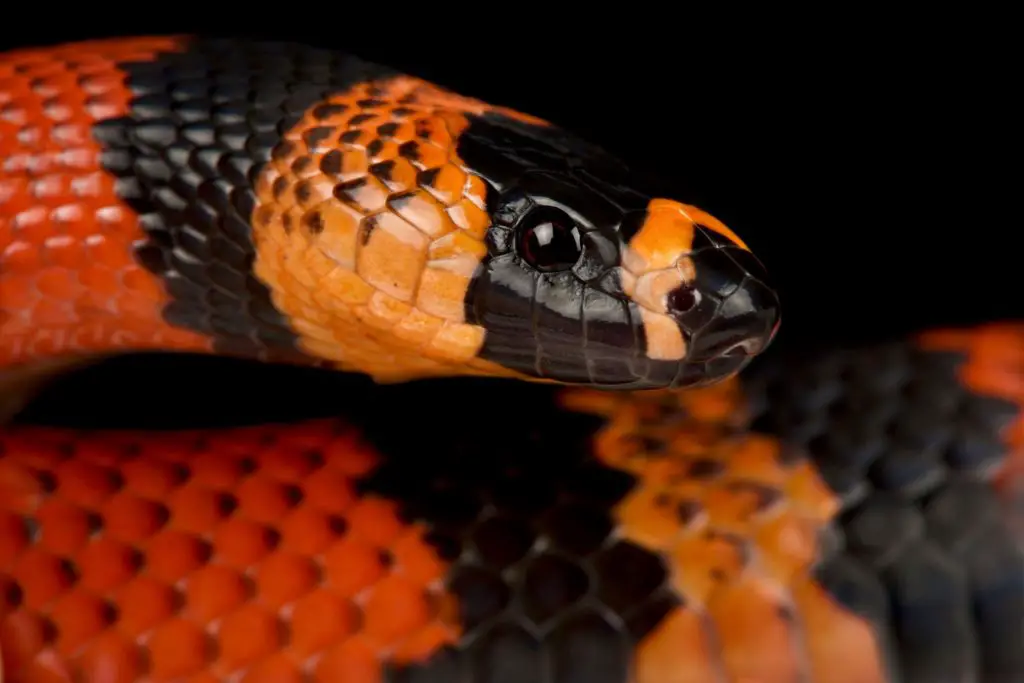
Genetics
One thing you’ll notice is that many of the morphs that you’re used to seeing from Corn Snakes are present in the Honduran Milk Snake.
This is no coincidence. Genetically speaking, King Snakes, Milk Snakes, Rat Snakes (including Corn Snakes) and Gopher Snakes are extremely closely related.
In fact, they’re all so closely related that most of them can hybridize and produce viable offspring. It really does make you question all the “new” species that are declared each year (including this one) – or what exactly a species is in the first place!
Just like Corn Snakes, the most popular Honduran morphs are either recessive like albino, or simply a pattern type, as in the case of Tangerine, which we’ll look at in a moment.
Honduran Milk Snake Breeders
When looking for breeders your best bet in either the US or Europe is to go and check out Morphmarket. It’s a hugely popular website, where you can directly contact breeders and see feedback about them. So far, it’s the safest way I’ve found to buy.
At the same time, it’s a good idea to get in touch with groups on social media, and join some forums. Joining a community is incredibly useful for getting in-depth information on breeding especially.
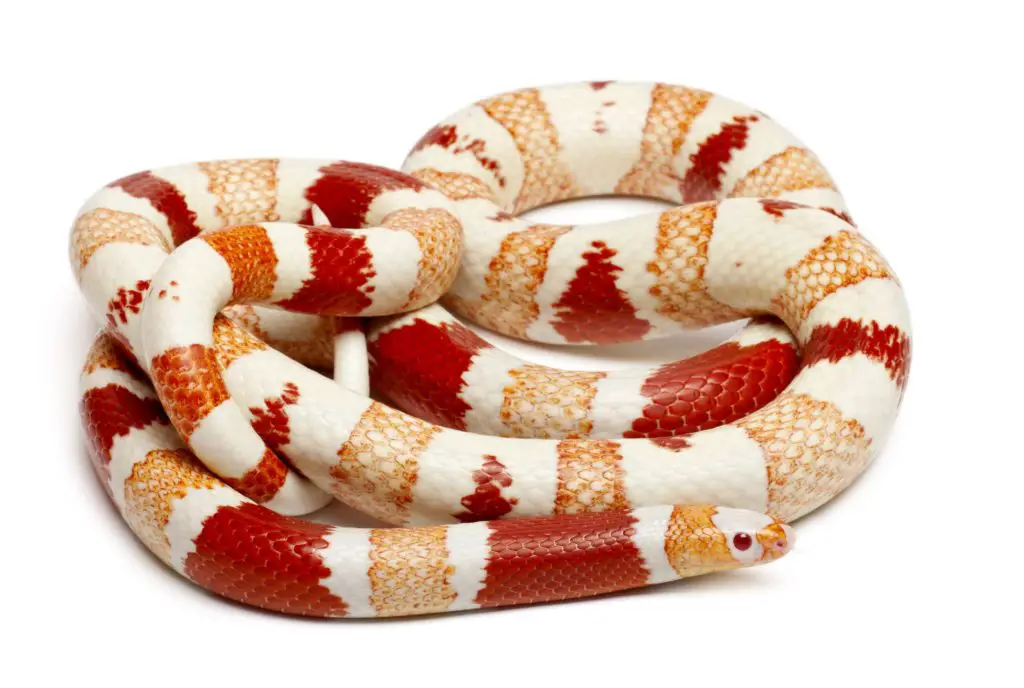
My top 5 morphs
Whenever I do a “top 5 Morphs” kind of post I’m looking for three things that tell me those morphs deserve a place:
- Popularity
- Uniqueness
- Flexibility
Popularity is an obvious one – morphs that quickly become popular, and maintain their popularity are going to be cornerstones of the market for years to come.
Uniqueness is important because morphs need to stand out. A snake with just one dark spot on its belly wouldn’t be particularly unique compared to its normal relatives. An albino Hondie’, on the other hand, is incredibly different from a normal animal and this is adds to its popularity.
Flexibility is essential for a morph to be a mainstay in herpetoculture. After all, there’s nothing more exciting than combining morphs to make new ones. Flexible, versatile morphs that work well in combinations tend to do very well.
1. Tangerine Honduran Milk Snake

First of all, I have to admit that this morph is at number one because it’s my favourite. The gorgeous tangerine bands add so much to the snake’s overall appearance that it’s hard for other morphs to compete.
If you like the red, white and black banding that typical Milk Snakes have, then there’s no way you can overlook the awesome, intense colours of the Tangerine Honduran Milk Snake.
The Tangerine gene itself isn’t recessive like the others on the list – it’s just a naturally occurring pattern variation. Nonetheless, it works extremely well in combination morphs. Albino Tangerine Hondurans, for example, look like two-toned orange and white candy canes.
2. Albino Honduran Milk Snake
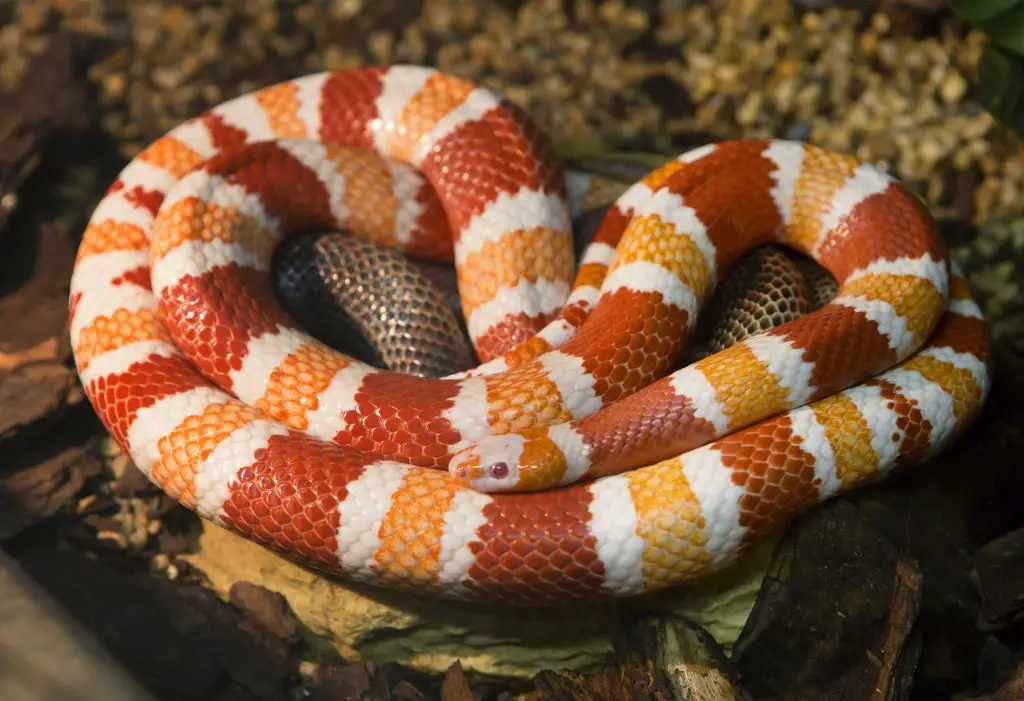
Second on our list is albino. The good-old recessive albino mutation is a mainstay in the breeding of most captive snakes. And admittedly, it looks pretty cool in young Ball Pythons, Gopher Snakes, House Snakes, and even Burmese Pythons.
In Honduran Milk Snakes it takes on a whole new dimension though. It literally blows almost every other albino snake out of the water in terms of appearance.
The main reason for this is that the albino mutation is more pronounced in redder animals. For this reason, the deep reds of Hondies’ are translated into dark orange, rather than light yellow like in some of the other species I just mentioned above.
All-in-all, what you get is an albino snake that has extremely rich colour and striking contrast in its pattern.
3. Hypo Honduran Milk Snake
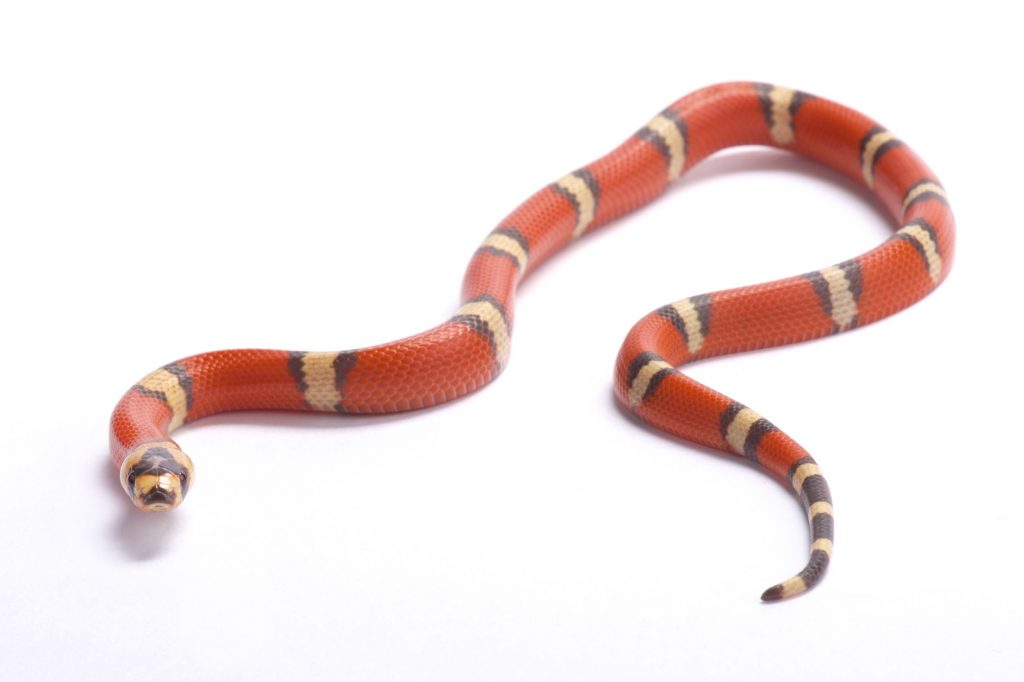
Hypomelanism is a term that simply means a reduction in melanin, the pigment that creates brown or black coloration. Like Albino, this is another recessive mutation, meaning that the snake needs to inherit it from both parents to visually express it.
In this snake, the Hypo mutation reduces the intensity of the black saddles. It also reduces the intensity of the red and white saddles present in normal individuals.
The result is a ghostly, light red, black and yellow snake that looks like it’s colour has been washed out. Now this might not sound particularly striking, but when combined with other morphs it can create a subtle beauty that is hard to describe in words.
It also works particularly well with Tangerine. Tangerine Hypos have a surreal, orange appearance that makes them look more like a Halloween decoration than a real animal.
4. Anerythristic Honduran Milk Snake

Another classic recessive mutation, anerythrism means a lack in red pigment, though it also affects yellow. The word itself is derived from the Greek “erythrós”, which means red, with the prefix “an” tacked on to denote an absence of.
Not that I really care about the etymology all that much. What I really care about is how incredible these snakes look! They have highly contrasted black and white bands, making them stand out even more than anery Corn Snakes.
Adding to the contrast is the fact that we’re used to seeing black, white, yellow or red Lampropeltis snakes.
Overall, the only thing that can make anery Honduran Milk Snakes look better is putting them next to a normal one to highlight their alternate appearance even more (just don’t leave them unattended – they might eat each other!).
5. Ghost Honduran Milk Snake
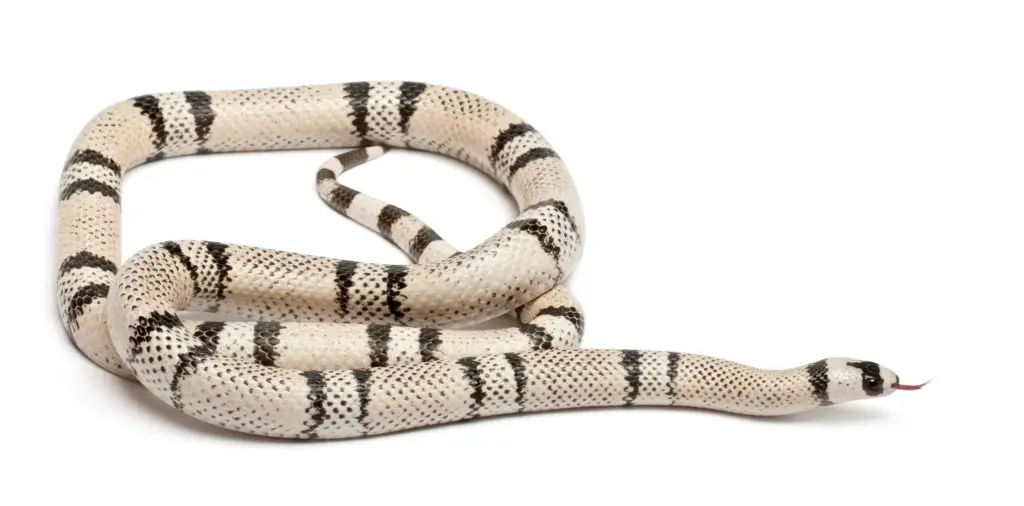
The only combination morph to make our list, Ghost Honduran Milk Snakes are both anerythristic and hypomelanistic.
As you might expect, a Ghost Hondie’ looks like a washed out or faded anery. What’s special about this is that you get some nice, bright areas of almost all white markings.
The black bands are also reduced, meaning you get a snake that appears to be mostly white, rather one that looks mostly black, as in the case of the anery morph.
What you might say is that the ghost morph doesn’t look that much different from the anery morph. But when you think about, ghost has much greater value for breeding: You really can’t go wrong when adding hypo and anery to a project with one single snake.
Summary
| Morph: | Gene type: | Availability: |
| Tangerine | Natural pattern variation | Good |
| Albino | Recessive | Good |
| Hypo | Recessive | Good |
| Anerythristic | Recessive | Low |
| Ghost | Combination of two recessive genes | Low |
